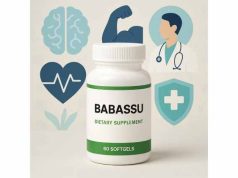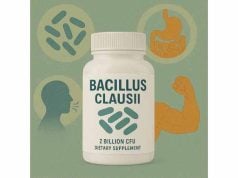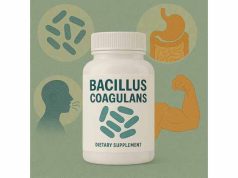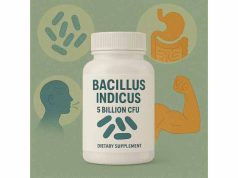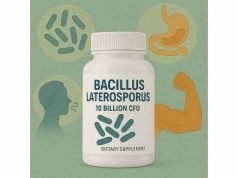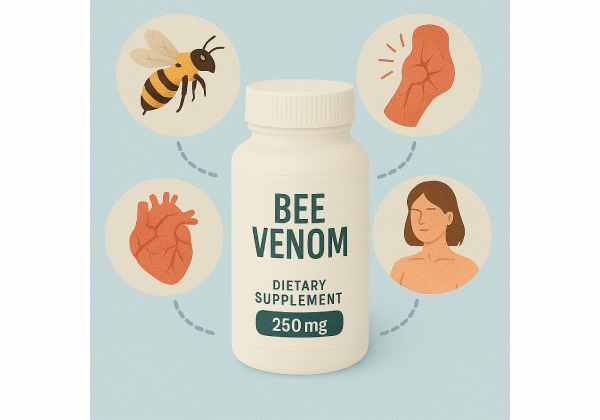
Did you know that bee venom therapy dates back thousands of years, yet modern science is just beginning to unlock its full potential? This natural substance—harvested from honeybees—has found new fame for its anti-inflammatory effects, skin rejuvenation, and potential relief from chronic pain. If you’re curious about bee venom benefits, uses, or safety, you’re not alone. Many seek out this unique remedy hoping to find alternatives to conventional treatments or support for autoimmune concerns. In this comprehensive guide, you’ll discover what bee venom really is, how it works in the body, the most researched health benefits, optimal ways to use it, and the latest safety evidence. Let’s dive into the science, applications, and what you need to know to make an informed decision.
Key Takeaways
- Bee venom is a natural compound from honeybees used in therapies for pain, inflammation, and skin conditions.
- Evidence suggests it may support autoimmune disorders, arthritis relief, and even cosmetic uses like anti-aging treatments.
- Proper administration and dosage are crucial for safety; allergic reactions can be severe.
- Not all bee venom products are equal—purity and quality matter.
- Always consult a healthcare provider before starting bee venom therapy, especially if you have allergies or chronic health issues.
Table of Contents
- What Is Bee Venom and How Does It Work?
- Understanding the Science: Bee Venom Mechanism of Action and Biological Effects
- Evidence-Backed Benefits and Uses of Bee Venom Therapy
- Safety, Tolerability, and Potential Side Effects of Bee Venom
- Bee Venom Dosage, Usage, and Administration: Best Practices
- Frequently Asked Questions About Bee Venom
What Is Bee Venom and How Does It Work?
Bee venom—also known as apitoxin—is a complex mixture of proteins, enzymes, and peptides secreted by honeybees (Apis mellifera) when they sting. Unlike simple insect stings, bee venom contains specialized compounds that have intrigued scientists, medical practitioners, and traditional healers alike. But what exactly does it do, and how does it differ from other natural remedies?
Defining Bee Venom
Bee venom is not just a single substance, but a cocktail of biologically active molecules. The most notable of these include melittin (which makes up about 50% of the venom), apamin, phospholipase A2, hyaluronidase, and adolapin. These components work together to create the familiar stinging sensation and localized inflammation, but also trigger a wide range of effects throughout the body.
Traditional Uses Across Cultures
For centuries, bee venom has played a unique role in folk and traditional medicine. Historical records from Ancient Egypt, China, and Greece detail the use of bee stings or venom extracts to treat pain, inflammation, and even chronic diseases. “Apitherapy”—the therapeutic use of bee products—remains popular in some cultures today, though its applications have expanded significantly.
Modern Bee Venom Products
Today, bee venom can be delivered in various ways:
- Direct bee stings: Some practitioners apply live bees to the skin.
- Bee venom injections: Purified venom is injected into specific points (similar to acupuncture).
- Topical creams and serums: Used mainly in skincare for anti-aging and anti-inflammatory benefits.
- Oral supplements: Rare, but sometimes marketed for systemic benefits.
Each delivery method offers different effects and carries its own risk profile, especially regarding allergic reactions.
How Bee Venom Enters the Body
When a bee stings, the venom is injected through the skin. In medical or cosmetic settings, purified venom is typically applied with much greater precision—either via micro-needling, injection, or topical application. The molecules in the venom quickly disperse, interacting with immune cells and tissues to modulate inflammation and pain signaling.
Unique Characteristics Compared to Other Natural Remedies
Unlike herbal supplements or simple anti-inflammatories, bee venom operates at both the local and systemic levels. The peptides and enzymes can:
- Disrupt cell membranes (causing pain but also fighting certain pathogens)
- Inhibit or stimulate immune responses (helpful for autoimmune conditions in some studies)
- Promote blood circulation and tissue regeneration
These properties make bee venom distinct in the world of natural therapies and explain its increasing use in both medical and cosmetic industries.
Why Are People Turning to Bee Venom?
- Growing demand for alternatives to synthetic drugs
- Interest in natural approaches for pain, arthritis, and skin rejuvenation
- Promising early research for hard-to-treat conditions like multiple sclerosis, rheumatoid arthritis, and chronic pain syndromes
Yet, this renewed popularity raises important questions: How exactly does bee venom work? What does science say about its effectiveness? And who should—and shouldn’t—consider using it?
These questions set the stage for a closer look at bee venom’s mechanisms, benefits, and potential risks, all explored in detail in the next sections.
Understanding the Science: Bee Venom Mechanism of Action and Biological Effects
When you look beneath the surface, bee venom is far more than just an irritant produced by honeybees. Its therapeutic power lies in a sophisticated blend of compounds that work together to affect cells, tissues, and the immune system. Here, we’ll break down the key components of bee venom and explain how they drive its main biological effects—many of which have caught the attention of modern researchers.
The Main Active Compounds in Bee Venom
- Melittin
The most abundant peptide in bee venom, melittin accounts for nearly half of its dry weight. Melittin has strong anti-inflammatory, antimicrobial, and cell-modulating effects. It disrupts cell membranes (causing that classic stinging pain), but also appears to regulate immune responses and suppress inflammatory pathways linked to arthritis and other autoimmune conditions. - Phospholipase A2 (PLA2)
This powerful enzyme helps break down cell membranes, amplifying inflammation and swelling. Yet, in controlled doses, PLA2 also stimulates the release of natural anti-inflammatory molecules in the body. - Apamin
Apamin is a small neurotoxin that can cross the blood-brain barrier. It blocks specific potassium channels in the nervous system, which may explain some of bee venom’s reported effects on nerve pain, muscle relaxation, and even mood. - Adolapin
Adolapin contributes to bee venom’s pain-relieving (analgesic) properties and has been shown in some studies to reduce inflammation. - Other Enzymes and Peptides
These include hyaluronidase (which helps venom spread in tissues), mast cell degranulating peptide, and minor compounds that work in concert to shape the overall effect.
How Bee Venom Influences the Immune System
One of the most exciting areas of bee venom research focuses on its ability to modulate the immune system. For example:
- Immune Suppression: Some peptides can suppress overactive immune responses, which is especially relevant in autoimmune diseases like rheumatoid arthritis or multiple sclerosis.
- Immune Stimulation: In low, controlled doses, bee venom may actually stimulate immune defenses, potentially supporting the body’s ability to fight infections or tumors.
- Cytokine Balance: Bee venom appears to influence the production of cytokines—signaling molecules that drive inflammation and healing. By regulating these signals, bee venom helps bring balance to immune responses.
Anti-Inflammatory and Analgesic Mechanisms
Melittin and other components have demonstrated the ability to:
- Inhibit pro-inflammatory enzymes like COX-2 and LOX
- Reduce the activity of inflammatory mediators such as TNF-alpha and interleukins
- Block pain signals at the level of the nervous system
This may explain why bee venom therapy is often sought for conditions marked by chronic inflammation and pain, including arthritis, bursitis, and certain nerve disorders.
Antimicrobial and Antiviral Effects
Some studies have shown that bee venom peptides can:
- Disrupt the membranes of bacteria and fungi
- Inhibit replication of certain viruses in laboratory models
While these findings are preliminary, they point to a potential future for bee venom in fighting infections that are resistant to standard antibiotics.
Effects on Skin and Tissue Regeneration
Topical application of bee venom has become popular in the skincare industry. Laboratory studies suggest that it can:
- Stimulate collagen production and wound healing
- Reduce the severity of acne and skin inflammation
- Protect skin cells from oxidative stress (damage caused by free radicals)
Potential for Neurological Support
With apamin’s ability to cross the blood-brain barrier and influence nerve signaling, there is early interest in bee venom’s possible benefits for certain neurological conditions. While more research is needed, this area remains one of the most promising for future discoveries.
Risks and Unknowns in the Science
Despite all these promising mechanisms, it’s important to acknowledge:
- Not all effects are beneficial—some components can be toxic in high doses
- Reactions can vary widely among individuals, especially those with allergies
- Much of the research is still early-stage or based on animal models
As with any emerging therapy, it’s critical to interpret early results with caution and consult qualified professionals before trying bee venom treatments.
Evidence-Backed Benefits and Uses of Bee Venom Therapy
Bee venom therapy has moved from ancient practice to modern clinical interest, with a growing body of research supporting its use for specific health conditions. While not a cure-all, evidence suggests bee venom can offer genuine benefits when used appropriately and under medical supervision. Here’s an in-depth look at the most compelling uses—and what science says about their effectiveness.
Rheumatoid Arthritis and Autoimmune Disorders
One of the best-studied uses of bee venom is for autoimmune diseases, especially rheumatoid arthritis (RA). Clinical trials have found that carefully administered bee venom therapy can:
- Reduce joint pain and swelling
- Improve physical function and mobility
- Lower levels of pro-inflammatory markers in the blood
These effects are thought to be driven by melittin and adolapin, which modulate immune activity and suppress chronic inflammation. In some protocols, bee venom is injected into acupuncture points or inflamed joints to maximize local benefit.
Multiple Sclerosis and Neurological Conditions
Some small-scale studies and patient reports suggest that bee venom may help relieve symptoms of multiple sclerosis (MS), a progressive autoimmune disease that affects the nervous system. Potential benefits include:
- Reduced muscle spasticity and pain
- Improved mood and energy
- Enhanced overall quality of life
While promising, these results are still considered experimental. Large, well-controlled studies are needed before bee venom can be widely recommended for MS.
Chronic Pain Syndromes and Inflammation
Many users turn to bee venom for chronic pain conditions beyond arthritis, such as:
- Tendonitis and bursitis
- Fibromyalgia
- Neuralgia and nerve pain
The pain-relieving and anti-inflammatory effects of melittin and other peptides may help dampen pain signals and improve comfort, especially when conventional therapies fall short.
Skin Health and Cosmetic Uses
Bee venom has captured the attention of the beauty industry for its potential to:
- Reduce wrinkles and improve skin elasticity by stimulating collagen
- Calm redness and inflammation, including acne flare-ups
- Speed wound healing and recovery from skin damage
Topical creams, serums, and even sheet masks containing purified bee venom are widely available, though results can vary based on product quality and formulation.
Allergy Desensitization
Interestingly, controlled doses of bee venom are used in “venom immunotherapy” to help people with severe bee sting allergies build tolerance over time. This process—guided by an allergist—can dramatically lower the risk of life-threatening reactions from accidental stings.
Emerging Research: Antimicrobial and Antiviral Potential
Laboratory studies hint at bee venom’s ability to combat certain bacteria, fungi, and viruses. While these findings are preliminary, they could lead to future uses in:
- Treating skin infections
- Addressing antibiotic-resistant microbes
- Supporting immune defense during viral outbreaks
What the Research Doesn’t Support (Yet)
While the list of possible uses is long, it’s important to separate hype from evidence. Bee venom is not proven to:
- Cure cancer
- Replace standard care for chronic illness
- Be effective for every user or condition
As with any alternative remedy, expectations should be realistic and aligned with available scientific data.
Who May Benefit Most?
Based on current evidence, those most likely to benefit from bee venom therapy are individuals with:
- Autoimmune arthritis who haven’t responded fully to standard drugs
- Localized musculoskeletal pain
- Interest in natural skin rejuvenation and healing
Bee venom therapy is not appropriate for everyone, especially those with a known bee sting allergy, certain chronic illnesses, or compromised immune systems.
The Importance of Medical Oversight
Given the risks involved, bee venom therapy should always be supervised by a knowledgeable healthcare provider. Self-administering bee stings or using unregulated products can be dangerous, leading to allergic reactions or serious complications.
The next section will explore these safety concerns, how to minimize risks, and the critical role of professional guidance in bee venom therapy.
Safety, Tolerability, and Potential Side Effects of Bee Venom
Bee venom offers promising benefits, but its use also brings real risks—some of which can be life-threatening for certain people. Understanding the full safety profile of bee venom is crucial for anyone considering therapy or supplementation. In this section, we’ll explore potential side effects, the risk of allergic reactions, medication interactions, and the best practices for safe use.
Common Side Effects of Bee Venom
For most people, mild to moderate reactions are the most likely outcomes, especially when bee venom is applied topically or injected in small, controlled doses. These include:
- Redness and swelling at the application or injection site
- Warmth, itching, or a mild stinging sensation
- Temporary pain or soreness
These side effects are usually short-lived and resolve within a few hours. However, with repeated or higher-dose exposure, stronger reactions can occur.
Severe Reactions: Recognizing Allergic Responses
The most serious risk of bee venom is an immediate allergic reaction—also known as anaphylaxis. This is a medical emergency. Individuals with a history of bee sting allergy are at greatest risk, but new allergies can develop even in people without previous reactions.
Signs of anaphylaxis may include:
- Rapid swelling of the face, lips, tongue, or throat
- Difficulty breathing or swallowing
- Dizziness, fainting, or rapid heartbeat
- Widespread hives or rash
- Nausea, vomiting, or abdominal pain
If any of these symptoms occur after bee venom exposure, seek emergency medical attention immediately.
Who Should Avoid Bee Venom Therapy?
- Anyone with a known allergy to bees, bee stings, or bee products
- Individuals with uncontrolled asthma or severe allergies to other substances
- Pregnant or breastfeeding women (due to limited safety data)
- Children under the age of 12 (unless directed by a medical specialist)
- People with autoimmune conditions not under specialist care
Even for those without known allergies, it’s crucial to have a healthcare professional present for the first administration of bee venom, especially injectable forms.
Other Potential Adverse Effects
- Systemic reactions: Rarely, some people experience fever, headache, muscle aches, or flu-like symptoms.
- Autoimmune flare-ups: For individuals with certain immune disorders, bee venom may aggravate symptoms if not properly supervised.
- Toxicity: Excessive doses or repeated exposures—especially via injection—can potentially lead to toxic reactions involving the kidneys, liver, or nervous system.
Interactions with Medications and Other Supplements
Bee venom can interact with certain medications, including:
- Blood thinners (increased risk of bleeding)
- Immune-suppressing drugs (unpredictable effects on immune response)
- Anti-inflammatory drugs (may potentiate or reduce their effect)
If you are taking prescription medications or managing a chronic condition, discuss bee venom therapy with your healthcare provider before beginning any regimen.
Safe Administration: Best Practices
To minimize risk:
- Work with a qualified professional: Choose a provider experienced in bee venom therapy or apitherapy.
- Start with a skin test: A small test dose under medical supervision can help identify potential allergies before full treatment.
- Use high-quality, standardized products: Only use bee venom from reputable sources, ideally those tested for purity and potency.
- Have emergency treatment available: If receiving injectable bee venom, ensure access to emergency medical care and keep an epinephrine auto-injector (such as an EpiPen) nearby.
Quality Control: Why Source Matters
Bee venom supplements, creams, and injectable preparations are not equally regulated around the world. Counterfeit, contaminated, or mislabeled products can increase the risk of unexpected side effects. Choose only well-reviewed brands or clinics with documented safety standards.
When to Seek Medical Advice
- Before starting any bee venom therapy or supplement
- If you have a chronic health condition or take regular medication
- If you experience any new or severe symptoms after using bee venom
Bee venom holds genuine therapeutic promise, but safe and informed use is non-negotiable. Next, let’s explore the best ways to use bee venom—including dosing, timing, and different forms of administration.
Bee Venom Dosage, Usage, and Administration: Best Practices
Navigating the world of bee venom therapy can be challenging—especially when it comes to finding the right dose, form, and method of use. Since bee venom is a potent natural compound, even small changes in dosage can make a significant difference in both effectiveness and safety. Here’s what you need to know to get the most benefit while minimizing risks.
General Dosage Guidelines
There is no single “standard dose” for bee venom, as appropriate amounts vary depending on the:
- Form of administration (injection, topical, oral)
- Specific condition being treated
- Age, weight, and health status of the user
Injection (Apitherapy and Medical Use):
- Often administered by healthcare professionals, typically starting with a tiny test dose (as little as 0.1–0.2 mg) to check for allergies
- A common therapeutic dose ranges from 0.5 to 5 mg per session, depending on individual response and treatment goals
- Frequency may range from 1–3 times per week, gradually increasing as tolerated
Topical Use (Creams, Serums, Patches):
- Applied once or twice daily, depending on product instructions
- A thin layer is usually sufficient; more is not necessarily better
- Always test on a small area first to check for skin reactions
Oral Supplements:
- Much less common due to questions about efficacy and absorption
- If used, follow product guidelines strictly and consult a health professional
Venom Immunotherapy (For Allergy Desensitization):
- Administered exclusively by allergists in a highly controlled medical setting
- Involves gradually increasing doses over months to years, tailored to the patient
Best Timing for Bee Venom Administration
- Medical and apitherapy injections are typically spaced several days apart to allow the body to recover and minimize side effects.
- Topical applications can be done morning or evening, but avoid immediately after sun exposure or shaving to prevent irritation.
- Cosmetic treatments (like bee venom facials) are often performed once weekly or monthly for skin rejuvenation.
Practical Tips for Safe and Effective Use
- Consult a professional: Never begin bee venom therapy without medical supervision, especially if using injections.
- Start low and go slow: Begin with the lowest effective dose and increase only as needed.
- Monitor closely: Keep a log of reactions, side effects, and benefits to share with your healthcare provider.
- Avoid unverified sources: Only use bee venom products from reputable, trusted suppliers or clinics.
- Be aware of timing with other medications: Space out bee venom therapy from other treatments if advised by your provider.
How Long Does It Take to See Results?
- For chronic pain or arthritis: Some users notice benefits within a few sessions, while others require several weeks.
- For skin health: Visible changes (such as improved texture or reduced inflammation) may appear after a few applications, but long-term results build over time.
- For allergy immunotherapy: Full desensitization may take months to years, and maintenance therapy is often required.
What If You Miss a Dose or Application?
Bee venom therapy is typically not a daily regimen (except in some topical cosmetic uses). If you miss a scheduled session, simply resume as directed by your provider—do not double the next dose.
The Importance of Professional Oversight
Improper self-administration, especially with injections, carries significant risk. Only licensed professionals should perform injectable therapy, and self-treatment should be limited to topical or cosmetic uses (and even then, with caution).
Integrating Bee Venom With Other Therapies
Some people use bee venom alongside physical therapy, acupuncture, or standard medications. Coordination among your healthcare providers is key to avoid unwanted interactions and to maximize results.
Bee venom’s unique properties can offer real benefits for select users—but only when dosed correctly and used wisely. In the next section, we’ll answer the most common real-world questions about bee venom, from everyday concerns to high-value queries searched online.
Frequently Asked Questions About Bee Venom
How does bee venom therapy work for arthritis pain relief?
Bee venom therapy may reduce arthritis pain by blocking inflammatory pathways, decreasing swelling, and modulating immune responses in affected joints. Its main peptides—like melittin—help inhibit enzymes and chemicals that drive chronic inflammation, which often leads to reduced pain and better mobility.
Is bee venom safe for everyone to use?
No, bee venom is not safe for everyone. People with bee allergies, uncontrolled asthma, or severe allergic histories should avoid it. Even healthy individuals can have reactions, so professional supervision and an initial allergy test are crucial before starting any bee venom therapy.
What are the main risks and side effects of bee venom therapy?
Common side effects include localized pain, redness, swelling, and itching. Serious risks involve allergic reactions or anaphylaxis, which can be life-threatening. Less common issues include headaches, flu-like symptoms, or aggravation of existing autoimmune conditions. Always consult a healthcare provider before use.
Can bee venom be used for cosmetic or anti-aging purposes?
Yes, bee venom is found in some skincare products and spa treatments for its reported anti-aging and anti-inflammatory properties. It may help improve skin texture, reduce fine lines, and boost collagen. However, results can vary, and a patch test is recommended for sensitive skin.
How should bee venom supplements be dosed for safety and effectiveness?
Dosage depends on the form (injection, topical, oral) and intended use. Only a qualified provider should determine injectable doses. For topical products, follow manufacturer instructions and start with a small area to test skin tolerance. Never exceed recommended dosages or use unregulated products.
Are there any interactions between bee venom and medications?
Yes, bee venom can interact with certain drugs, especially blood thinners and immune-modulating medications. It may increase bleeding risk or unpredictably alter immune response. Inform your doctor of all medications and supplements before starting bee venom therapy.
How long does it take to notice the benefits of bee venom therapy?
Benefits can appear after a few sessions for pain or inflammation, but longer courses may be needed for chronic conditions or skin concerns. Results vary by individual, therapy method, and health status. Consistency and professional guidance are key to maximizing results.
Disclaimer:
This article is for educational purposes only and does not substitute for professional medical advice, diagnosis, or treatment. Always consult your healthcare provider before starting any new supplement or therapy, especially if you have allergies, medical conditions, or are taking medication.
If you found this article helpful, please consider sharing it on Facebook, X (formerly Twitter), or your favorite social network—and don’t forget to follow us for more evidence-based health insights! Your support helps us continue bringing you the latest in wellness and natural therapies.


